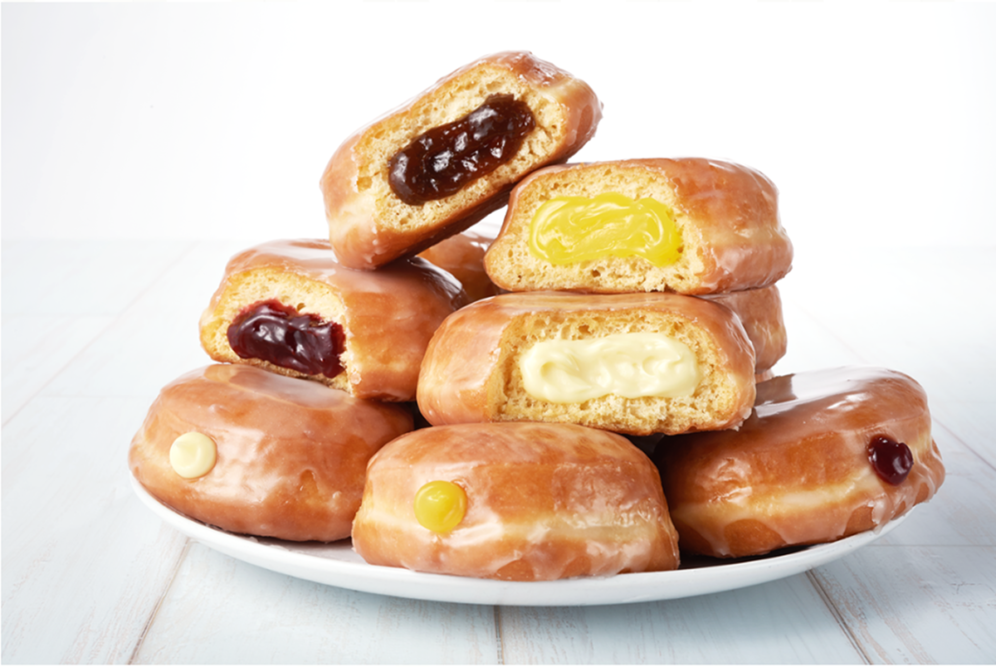Demand for donuts produced in commissaries and other offsite facilities and in instore bakeries continues to exceed what it was prior to COVID, said Randy McArthur, national technical sales, Dawn Foods, Jackson, Mich.
That said, labor shortages continue to be a challenge, with demand being dependent on the individual markets and whether stores have been able to obtain the necessary labor to keep their bakery supplied.
And while the labor crunch is affecting everyone, purveyors of donuts can be among those most vulnerable.
“The labor shortage continues to be one of the biggest challenges facing the food and beverage industry,” McArthur said. “This is especially true with a product like a donut, which can be more labor intensive to make. Additionally, the labor needed requires a higher skill level, making it more difficult to find.”
For instore bakeries that are having trouble staffing overnight bakery positions, Dawn can provide its retail partners with more extended shelf life products.
For others, Dawn is recommending a change to the way instore bakeries produce during the day and helping them move to a commissary-type setup to streamline their operations, McArthur said.
“Dawn has a long history of supporting commissaries as well as instore chains that have their own commissaries – they may make frozen or fully-finished donuts to transfer to individual stores,” he said. “Either way, we see our role as putting the puzzle pieces together across all channels, whether suppliers, manufacturers or co-packers, to help each individual chain and store operator optimize their operations and ensure they run as efficiently as possible.”
Due to the labor shortages, many stores are trying to simplify their donut offerings, he added. Fancier donuts with unique ingredients and decorations, for instance, are a thing of the past. Instead, many stores are leaning toward simplification and sticking to staple donuts that are easier and less expensive to make.
One exception to that change, however, is the cake donut category, where Dawn is seeing distinct flavor varieties emerge as a hot trend, McArthur said.
“Specifically, instore bakers are integrating different flavor varieties, such as lemon, strawberry or an old-fashioned donut, since these flavor additions don’t impact the method or production time,” he said. “This allows instore bakeries to have fresh offerings for customers without significantly changing the amount of labor needed on a day-to-day basis.
Birthday cake, sourdough and vegan donuts are among the other trends Dawn is helping its retail partners stay on top of.
During the pandemic, many instore bakeries had to close their self-service donut cases and pivoted to individually packaged items that were COVID-safe, McArthur said.
Now, as restrictions have loosened up, the hesitancy to use self-service donut cases has faded, driving demand and acceptance back to pre-COVID levels.
What has endured from the peak pandemic era is a change in how — and, more importantly, when — donuts are consumed, McArthur said.
“Traffic patterns have shifted permanently, with less people going into the office every morning and grabbing a donut on their way in. Traffic for donuts and other grab-and-go purchases is now throughout the day.”
When do people eat donuts?
- Morning: 87%
- Afternoon: 38%
- Evening: 33%
- Late night: 23%
Source: Dawn Foods
Donut flavor trends
- Tiramisu Filled
- Crème Brulee Glazed
- Chocolate Babka
- Yeasted Blueberry with Candied Ginger Crumbs
- Meltaway Toffee Crumb
- Fruit Punch Glazed and Earl Gray Tea Crumbs
- Chocolate Mousse Challah
Source: Vincent Barcelona, director of sales-national accounts and culinary, Stratas Foods

